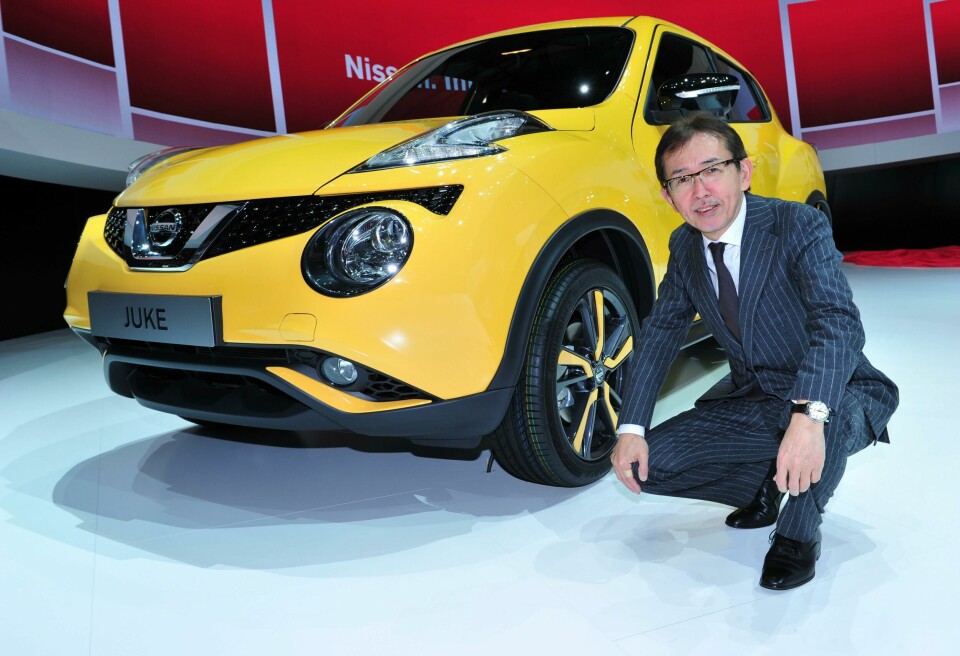
Designer interview: Shiro Nakamura
A giant of car design, Shiro Nakamura, through his work with Nissan, helped forge a Japanese design identity with models like the Cube and the GTR. Car Design News spoke to him about his new studios, his early successes and how form is distilled through concepts
Over nearly two decades Shiro Nakamura fostered a design culture at Nissan that helped define Japanese design. A diverse model range, which made room for contrasting projects like adroit city car the Cube and the rapid GTR assures Nakamura place in the pantheon of great designers. Ahead of his fireside chat at the upcoming Car Design Dialogues Asia, CDN spoke with Nakamura to discuss his career to date, from the iconic models of old that he created to the latest work at his studios in Japan and the US.
Car Design News: When did you know you wanted to be a car designer?
Shiro Nakamura: I was 10 years old (1960) when I saw a yearbook for world cars which highlighted Italian Carrozzeria custom cars. I was so fascinated with car design. At that time, my heroes were Pininfarina, Bill Mitchell at General Motors and then Giugiaro. And my final decision in high school to go to design school was influenced by Mr Hideo Kodama who was working at Opel design at that time.
CDN: Tell us about your first role in design – what was the design culture like at that moment in Japan?
SN: After graduation from Musashino Art University in Tokyo, I started my career at Isuzu Motors. The company had just become an affiliate of GM and had talented designers who studied at the Art Center. The skill level of design was very high because they introduced the GM design process – it was probably the most advanced design studio in any Japanese automotive company at that time.
CDN: Japan became a global player in the 1980s – what had changed in terms of design culture to make that possible?
SN: In 1960, most of Japanese auto companies used Italian carrozzeria for their products. In the 70s, many Japanese designers were sent to design schools in US and Europe, they brought back the skills. In the 80s, major car companies opened overseas studios in California. The Japanese automotive design industry grew steadily and gained power.
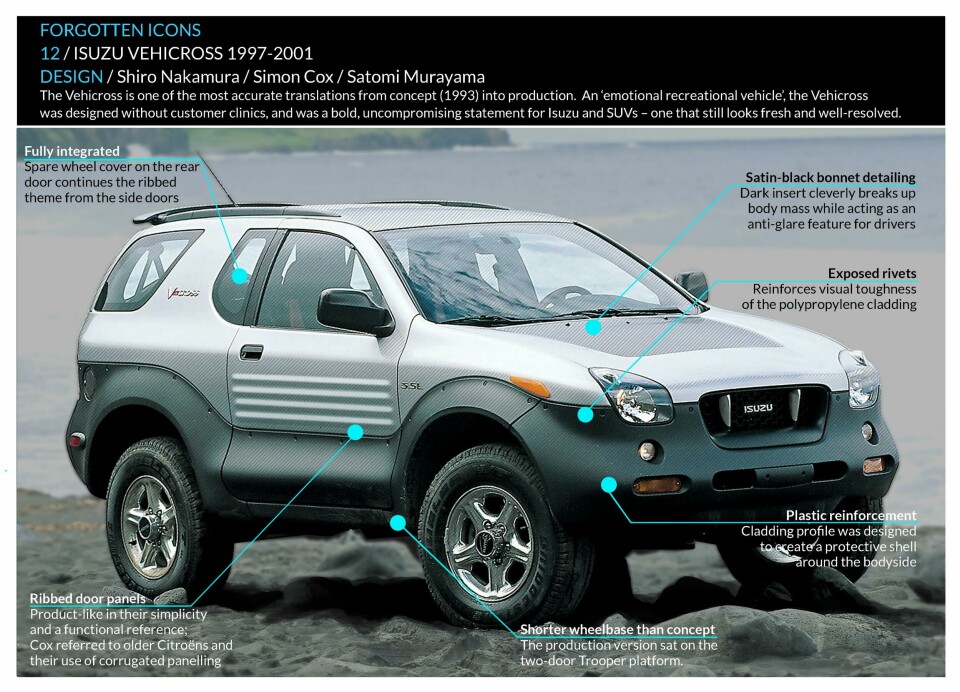
CDN: In your early years, what was the most significant project?
SN: I did production work for the Isuzu Aska sedan (GM J car project) and Gemini (Ital design-based) in the early days. I learnt a lot from those projects, but they were not my own design direction. After spending a year at GM Design in Michigan, I went to Europe to open a studio. Isuzu 4200R is the first project I was in charge of. I worked with young designers at Lotus, which was a GM affiliate at that time, because I did not have my own team yet. Julian Thomson, Simon Cox, and also Antony Lo just graduated from RCA. I worked with the modelling and prototype making company, MGA, where Peter Horbury was the design head. The 4200R was displayed at the 1989 Tokyo show, and was very well received. I made two more concepts in Europe, COMO with V12 F1 engine, and Vehicross. I wanted to create totally new and unique concept and design.
CDN: The Isuzu VehiCross still looks radical today – what are your memories of that project? How influential do you think it has been?
SN: Vehicross is a compact SUV based on a small passenger car platform. It had 1.6-litre engine and all-wheel drive. Isuzu had decided to terminate passenger cars and focus on SUV and trucks. I thought it was a great opportunity to create a unique product in line with the company strategy. Vehicross in the last project of my time in Europe, and represents the compilation of my design philosophy alongside the output of my European design team.
CDN: What happened after you left Isuzu?
SN: I became the head of design at Nissan, and we were very busy with lots of new global projects. And as a designer, I owed a lot to Isuzu. I went to the Art Center sponsored by Isuzu. I went to GM Design for an exchange program. And the company gave me an opportunity to set up a studio in Europe, and design three concept cars with freehand.
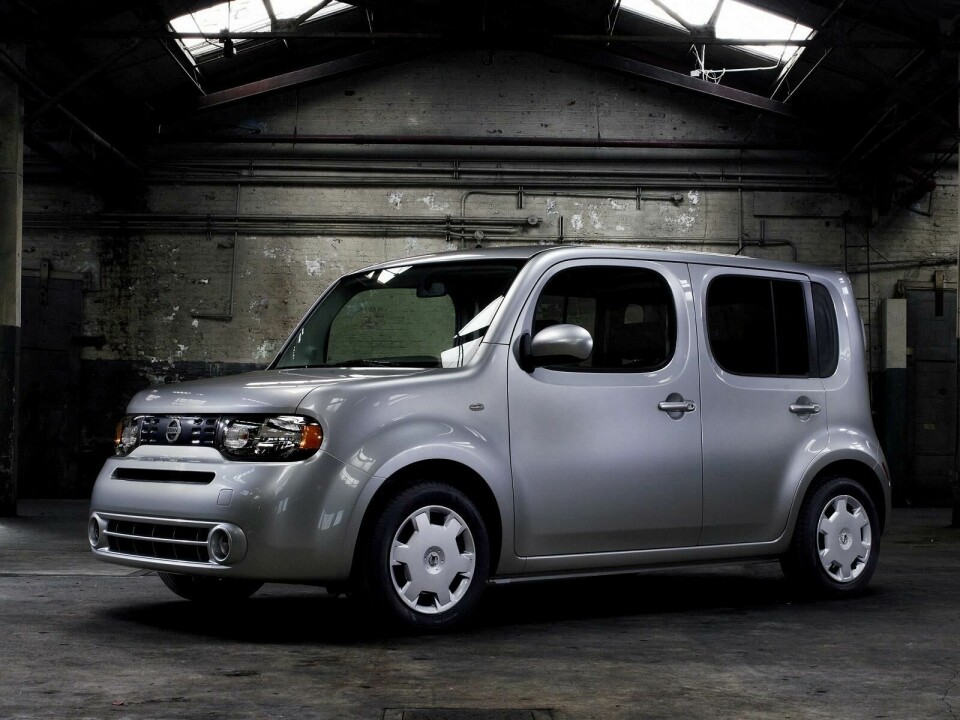
CDN: You were drafted in to reinvigorate Nissan – what was the first thing you did?
SN: I had done a few great designs such as the 4200R, which was very attractive, but it was a European car. I wanted to create something fresh and different from other European and US companies, and I was trying to decipher how to establish Japanese car design. I gained inspiration from Issey Miyake and Tadao Ando, whose designs were unmistakably Japanese. Why not do the same for car design?
Revitalising Nissan was a great opportunity to establish Japanese design. The company had a great design history, and it was very active in the 1980s but then it lost its way. I set a goal for Nissan Design to be a global design leader based on Japanese DNA and culture.
CDN: Can you explain the design thinking behind the Cube?
SN: The concept and design of Cube is really the reflection of the Japanese culture in a traditional and modern way, which targeted young Japanese people. Not only the Cube; the GTR and Juke are the same. They are not necessarily beautiful shapes, but they are unique and unmistakably Japanese. My goal as a car design director was to design the car not based on traditional values and theory established by western culture, but draw on Japanese culture. I wanted to break the mold.

CDN: The range of models you oversaw at Nissan was very diverse: Nissan Cube, Fairlady Z, GT-R, Murano, Qashqai, Juke, Leaf – all very different but all interesting. How did you create a design culture at Nissan that allowed for such different design approaches?
SN: Historically, design consistency as a corporate brand is not appreciated in the Japanese market. When I set out to define Nissan’s brand identity, it was not about design language, but a design attitude and concept: “Bold, Thoughtful, Distinctive”. The themes were not the same with each car but the customer can nevertheless experience the same feeling.
CDN: When you were at the top of your game - did you look at what other designers at rival companies were doing? Who did you admire?
SN: When I joined Nissan, my Art center classmates were very active in the industry: J Mays at Ford, Chris Bangle at BMW, and I knew Patrick le Quement who revolutionised Renault design. After that, Walter de Silva of VW, Peter Schreyer of Kia.
CDN: Do you have a model you are most proud of?
SN: In addition to Vehicross, I would also mention the GTR, Juke, Cube, Murano, FX, 350Z, Infiniti Q50/60, and Essence concept.
CDN: Moving on to your more recent work: can you share with us the ethos behind your new studio?
SN: I have two studios in Hollywood, LA (HHCP) and Daikanyama, Tokyo (SNDP). Both are in a great inspirational environment. Those are not just traditional design consultancy studios; we design and provide studio space and creative teams for co-creation with partners and clients.
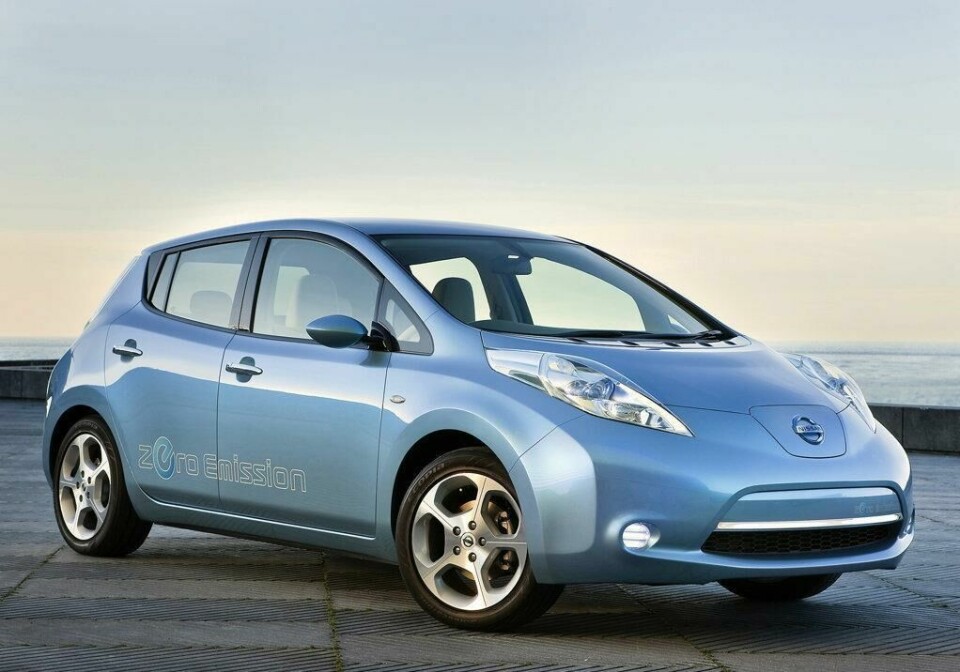
CDN: Do you have more creative freedom now?
SN: It depends. When you work on a partner/client project, you have to respect their brand strategy and their preference. On the other hand when we make our own proposal, it has complete freedom.
CDN: What do you do when you are designing to help the creative process? Do you need perfect silence? Do you listen to music?
SN: I would rather talk and discuss with people. It energises and stimulates me; it is like interplay of jazz improvisation. Playing music and designing have a lot in common. And quite often new ideas come when I wake up in the morning.
I started play jazz bass when I was at high school, and jazz has been with me since then. It helped develop my creative thinking. I loved jazz giants such as Miles Davis and John Coltrane, but Miles Davis is clearly my benchmark as a creative leader. He transformed style of jazz performance several times, reflecting trends. Each time, he played with great, talented young musicians, such as Herbie Hancock, Wayne Shorter, Ron Carter, They inspired each other and created completely fresh approach. Miles Davis discovered their talent, and all of them became great established jazz musicians. I think Miles Davis was good trumpet player but not great. But he is great creative leader incomparable with any other jazz giants. In car design history, I guess that Sergio Pininfarina, Nuccio Bertone could be same type of creative leader.
I had an interesting encounter with Herbie Hancock who contacted me in 2002. We became good friends, even playing together once! Of course, I love his music and piano playing, but furthermore I admire his attitude toward music as a creator and it inspired me a great deal. Hancock said: “As a creator, you have to be honest to yourself, but you are responsible for the audience.” I fully agree with this and believe it applies to design.
Only after you master the rules/theories, you can think about breaking them. Jazz is always looking for new style and sound. Harmonization of jazz playing is different from classical music or popular music; they use so called tension note for creating a modern sound. The tension note is considered discordance in traditional way. Nowadays, they even play completely out of harmony, called, “out phrase.” Musicians improvise out of harmony intentionally, not in a haphazard way. You cannot play nicely out of harmony, if don’t know how to play in harmony.
In Japanese traditional art, there is a term “Shu-Ha-Ri”. It means:
1)Learning the fundamentals
2)Breaking tradition
3)Creating your own tradition
This theory can be alive for creating new design language. I learned a lot from authentic great design established by European and American masters. I tried to break the rule and create our own language when I designed GTR, Juke, Cube and Micra.
CDN: What is your opinion of the current state of car design? There has been lots of change in the industry but are we in a good period for design?
SN: We are looking at 100 years of mass production. Look at the change from the 1908 Model T to the 1965 Mustang – it was very significant. But we haven’t seen much in the way of change from the 1965 to the 2020 Mustang. Yes, the packaging of automobiles is far more mature, and the models are more diverse than ever before in terms of segmentation. Yet, I would say it has become very hard to create a unique character and designs all look similar.
It was inevitable, because the products reflect the globalisation of market and of demand. Before cars became a global commodity, the difference of design from country to country was very clear. Cars were designed locally by local designers, and they were sold in the local market.
Today, there are only a few clearly distinctive designs. The same picture unfolded in the fashion industry, with brands like Zara and Uniqlo all creating very similar garments. For economic reasons, these companies needed to plan more volume per product for all markets, while only the luxury brands retained their strong identity. Companies need to achieve planned sales volumes. Most are not able to take risks, so they follow what they know has already worked.
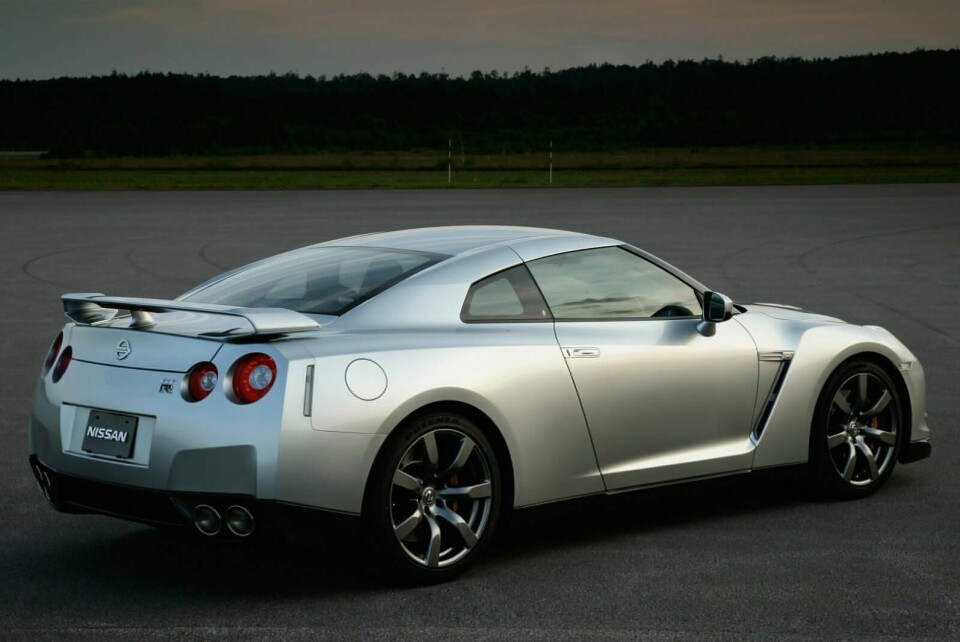
We see several revival designs in the car industry are selling well, such as Mini and the Fiat 500. Customers buy them because they are distinctive and unique. I don’t think customers buy them because they like the original design; I don’t think they even know the original. Why is it successful? Of course, the original design theme is great. And the heritage of the brand is strong. Probably, for OEM management to be confident with unique and distinctive design, they need that strong heritage and reference to the original design.
CDN: Can we speak about car design in terms of eras? If so, who will dominate the new era?
SN: Historically, automotive design has had a peak in every 30 years. In the 1950’s and 60’s, we saw US and European domination, and then Japanese and Korean took over in the 1980’s, 90’s and 2000’s. I think it could be Chinese next.
CDN: What are you most looking forward to in terms of design given the rise of EVs and automated vehicles?
SN: Design is a reflection of new technology, but also of society and cultural movements. The direction will be polarised. Full autonomous drive and shared utility transportation design will have new packaging and new design value. Autonomous and manual drive coupled with traditional ownership models will maintain the traditional packaging and design value of car design. EV should give more freedom for packaging, but in reality, we are not there yet.
CDN: What is the one piece of advice you were given as a young designer that stuck with you – and does that advice still hold true for a new designer just starting out?
SN: I don’t remember whether I got good advice. To young designers I would say, to understand form you must copy the past great design perfectly. This will help you learn a lot. However, don’t be influenced by others when it comes to creating your own work. Be inspired rather than influenced. I feel that today young designers are influenced by each other rather than inspired by each other. Inspiration sparks emotion – it’s uplifting and generating new ideas. Influence can be positive and negative. We need to find the fine line between influence and inspiration for creation. To senior designers and managers: don’t start design with shape, but concept. Shape is merely the result of thinking.



